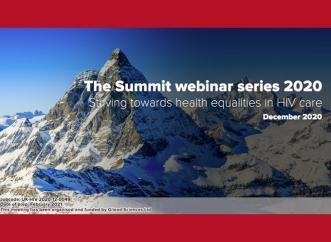With improvements in ART efficacy, tolerability and access in recent years, the management of HIV has evolved from treating progressive HIV infection and declining immune function to dealing with a lifelong condition in an ageing population with potential comorbidities.1,2
Regular screening for common comorbidities in an ageing population is essential as they can occur earlier in people living with HIV than in HIV-negative individuals. Most comorbidities are not specific to HIV itself but are associated with ageing. These include:1-3
• Cardiovascular disease (CVD)
• Neurological disease
• Anaemia
• Osteoporosis
• Liver disease
• Renal disease
• Frailty
• Mental illnesses
• Many non-AIDS-related cancers
• Chronic lung disease
• Type 2 diabetes
• Non-AIDS-associated infections
Managing comorbidities as a multidisciplinary team
Screening and treatment are usually no different than that for HIV-negative individuals, although screening may be initiated at a younger age for some age-related conditions.2 A multidisciplinary approach, with relevant expertise from specialist colleagues, should be considered when managing multiple comorbidities in people living with HIV.4,5
Healthcare professionals who are unfamiliar with antiretroviral therapy (ART) should seek guidance from HIV specialists before any new treatment is prescribed, as certain medications may invoke adverse drug–drug interactions.3 In situations where people living with HIV are seeing multiple HCPs, some level of shared-care arrangement is likely to be beneficial.6
A healthy lifestyle could make the difference
Lifestyle changes can help to decrease the risk of developing a comorbidity and reduce the impact of existing comorbidities. This may involve improvements to diet, giving up smoking or introducing an exercise regime.3,7
Agreement about the best course of action with realistic goals can be facilitated with other members of the care team, including dietitians. The key to successful lifestyle changes is empowerment of the central figure in the process – the person living with HIV.
Benefits of smoking cessation intervention
The smoking rate in people living with HIV is two to three times higher than in the general population. People living with HIV who smoke face higher non-AIDS-related mortality compared with non-smoking people living with HIV. People living with HIV who smoke may also face an increased risk of death from CVD and cancer compared with non-smoking people living with HIV, as well as an increased risk of other non-AIDS-related death.8
By addressing the risks associated with smoking, discussing how it may affect chances of successful treatment and the benefits of quitting to overall health, non-smoking people living with HIV may feel encouraged to quit, even more so if they are already considering stopping.
Understanding the existing comorbidities in people living with HIV or potential comorbidities associated with ageing, can inform treatment decisions include what ART regimen to initiate and what adherence strategies to implement.





